Technologies
Samsung Galaxy A14 5G Review: $200 Phone Hits Every Essential
This phone’s best feature should be on every phone.
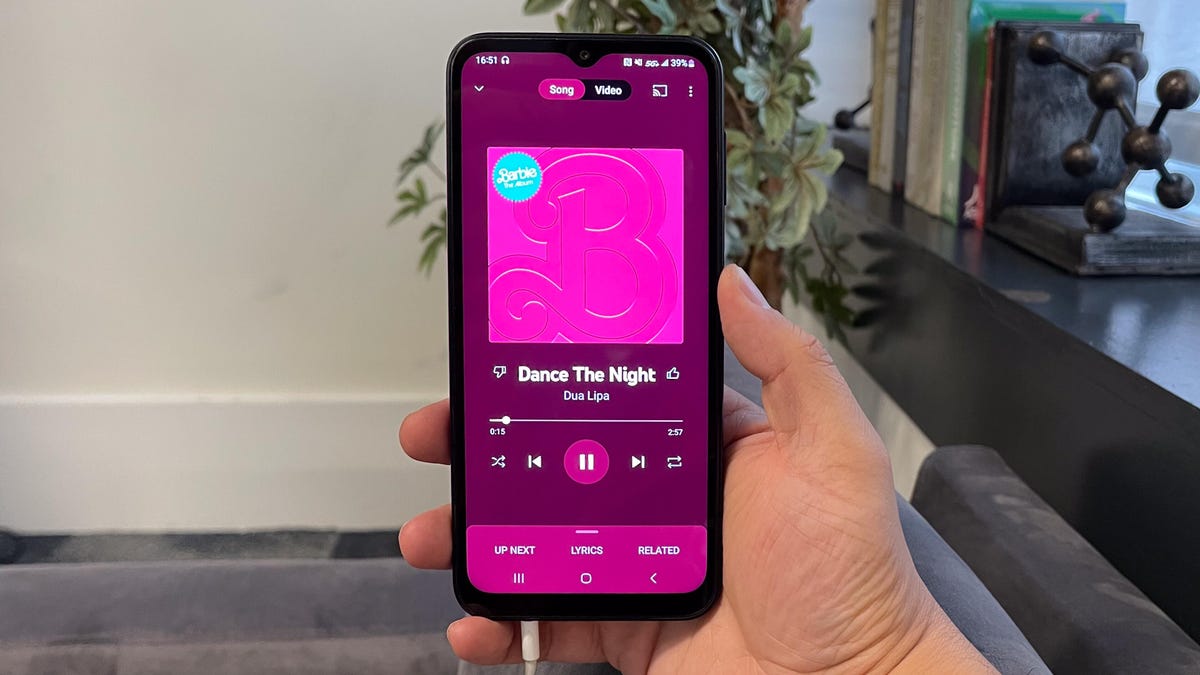
The $200 Samsung Galaxy A14 5G sets a new baseline for cheap phones. It’s one of the few affordable phones to include NFC for contactless payments and support 5G. Even more notable is that Samsung provides two years of software updates along with five years of security updates for the A14, when most similarly priced rivals stop at one software update and three years of security updates. This means that even though the phone’s a lower-cost option, it’s one you could safely use for several years if you chose to — and with perks usually found only in pricier phones, the Galaxy A14 5G is a great choice.
Over my month of testing the Galaxy A14 5G, these inclusions meant I could use the phone to buy a quick breakfast, browse the web while listening to music during my commute, reliably use the phone’s camera for day trips, and with its 5,000-mAh battery, still have enough of a charge left to use the phone the next day.
That’s not to say the phone is issue-free: The Galaxy A14 cuts corners with a fairly drab design and a slower processor that sometimes left me waiting for apps to load. But load they did, and if you’re just looking for a phone that can handle most daily tasks, the A14 could be a solid option as long as you aren’t craving speed.
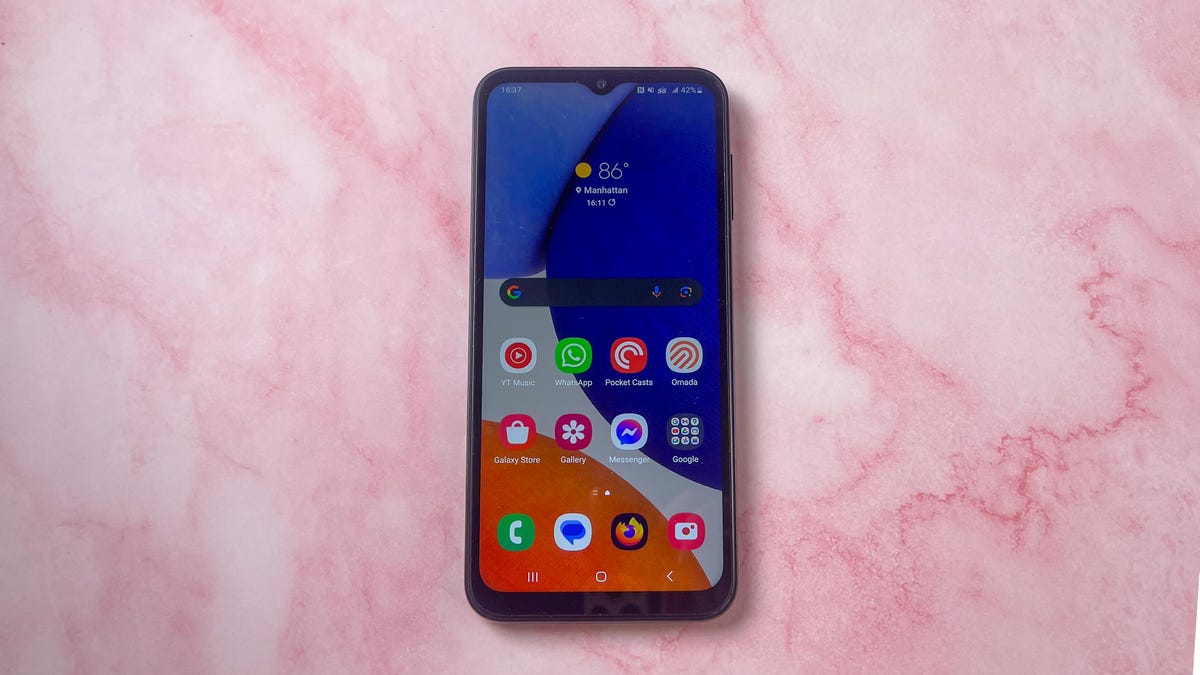
Samsung Galaxy A14 5G design, specs and features
The Galaxy A14 5G comes in one color, black, and has a reflective plastic body. It feels a bit thick in-hand, with the back embracing a blocky look that lacks any rounded edges. Along the top-left corner are its three cameras: a 50-megapixel main camera, a 2-megapixel depth camera and a 2-megapixel macro camera.
Around the front is a teardrop notch for the 13-megapixel front-facing camera. In addition to its 1,080p resolution, the 6.6-inch display has a 90Hz refresh rate. While the $200 Moto G Stylus runs at a consistent 90Hz, the A14 has an «adaptive» mode that adjusts up to 90Hz when scrolling through text and animations while swiping between apps. I found the effect noticeably smooth, especially when I was reading articles or playing games.
The phone plays audio through its single speaker, which was fairly easy for me to accidentally block when I held the phone horizontally to watch videos. It’s notable since Motorola’s current budget phone lineup includes stereo speakers across its Moto G phones, (though the Galaxy A14 does include a headphone jack as an option for stereo audio). While the Samsung phone’s internal 64GB of storage should be enough to get you started, you do get the option of expanding storage to 1TB using the phone’s microSD card slot.

In benchmark testing, the Galaxy A14 5G’s Geekbench score came out ahead of the Moto G Stylus, but it certainly doesn’t feel like it in my real-world use. The phone’s Mediatek Dimensity 700 processor is sluggish, and I often noticed the A14 needing an extra beat to unlock itself when I had another app open, when I tapped a text box to launch the keyboard and when moving between apps. Software updates can refine this in time, and its current performance is totally fine for casual use. But this wouldn’t be a phone that could handle lots of productivity documents or more graphically demanding apps.
Geekbench 6 Benchmarks
- Single-core
- Multi-core
However the Galaxy A14’s inclusion of NFC is quite meaningful, providing full compatibility with Google Wallet for contactless payments. I rarely find NFC for contactless payments in phones under $300, even though it’s accepted everywhere from transit systems to convenience stores. I hope this creates a trend and we’ll finally start seeing NFC become a feature on every phone regardless of cost.
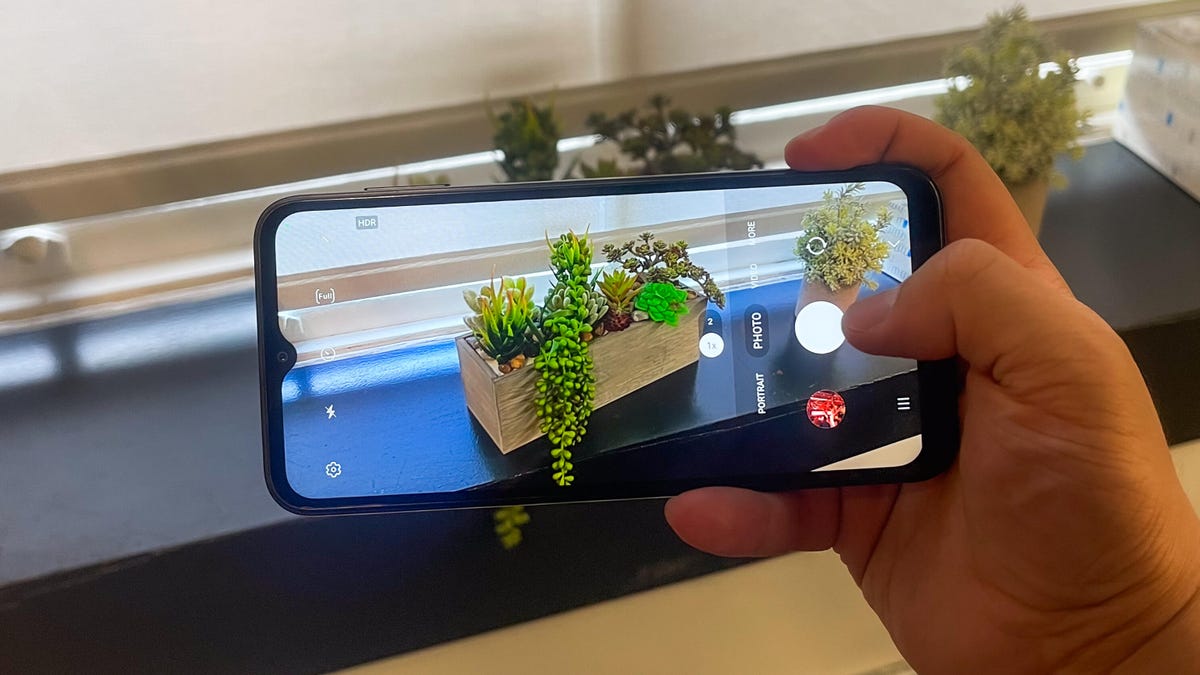
Samsung Galaxy A14 5G cameras and photography
The Galaxy A14’s cameras, despite the inclusion of a 50-megapixel main camera, are a mixed bag. I took the phone on several day trips, including a visit to a Brooklyn anime food festival and during a weekend stop-in to San Diego Comic-Con.
Outdoor photos came out decent as long as there was very little movement. During the anime food festival, my dessert photos of a cheesecake and rabbit milk pudding looked nice, but there was blurriness in most of my other photos whether due to the crowds or movement by the performers during a Taiko drum show.



A selfie I took while outside is decent, but similar to some of Samsung’s more expensive phones, I felt like colors were exaggerated.

This exaggeration also holds true for my test photo of the grass wall in CNET’s office. Photos taken with the Moto G Stylus and the $250 Moto G 5G captured more accurate shades of green than those taken with the Galaxy A14 5G.



And much like other phones in this price range, photo quality proves challenging when moving indoors. Even on the well-lit San Diego Comic-Con floor, my photo taken with Final Fantasy 16’s Ifrit looks fuzzy.

When I moved to Amazon’s Good Omens party, the dim lighting made it a challenge for the A14 to find focus.

Returning to New York, there’s plenty of image noise in this selfie, which I took in the underground La Caverna restaurant, but my photo of the restaurant itself looks better since there weren’t many other people moving around.


Overall the Samsung Galaxy A14’s photography is definitely not punching above its price range. If finding a $200 phone with decent cameras is important to you, Motorola’s latest G-series phones could be a better option. While the Moto G phones have similar issues in darker environments, from my testing I feel like the photos taken by those cameras are slightly better.
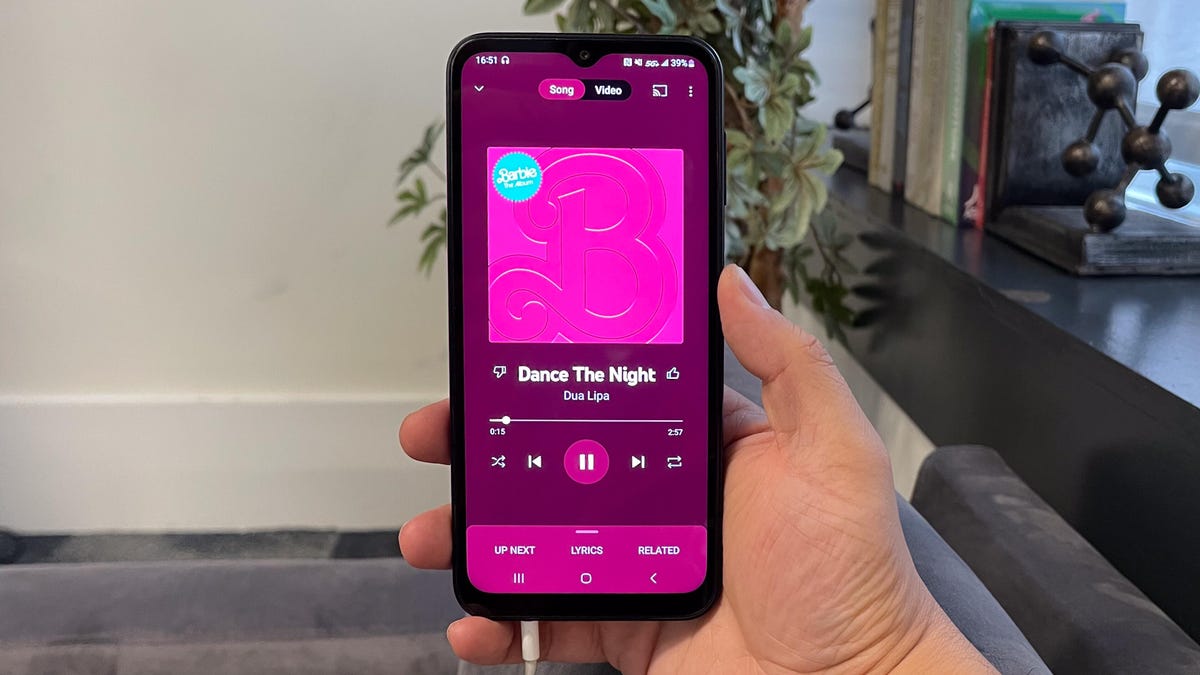
Samsung Galaxy A14 5G Bottom line
The Samsung Galaxy A14 5G is one of the most functional phones I’ve tested for under $200. Even though the phone has noticeable issues — including the slower processor and mixed photography performance — the device is capable of performing most essential tasks. The inclusion of NFC is a clear highlight, and hopefully it means that contactless payment features will now make their way into phones at all prices. The longer security update timeline also means the phone will be safe to use for several years, which could be especially helpful for someone just looking for an affordable device to stay in contact with friends and family.
This makes the Galaxy A14 5G particularly easy to recommend for most people shopping for a phone on a budget, or if the phone is offered for free. But keep in mind that the phone won’t be getting any faster, and should deals or incentives drop the price of a better-equipped phone that normally costs $300, don’t pass that up.
Samsung Galaxy A14 5G vs. Moto G Stylus (2023) vs. Moto G 5G (2023)
| Samsung Galaxy A14 5G | Moto G Stylus (2023) | Moto G 5G (2023) | |
|---|---|---|---|
| Display size, resolution | 6.6-inch FHD+ LCD display, (1,400×1,080 pixels), 90Hz | 6.5-inch IPS LCD; 1,600×720; 90Hz refresh rate | 6.5-inch HD Plus LCD display (720p resolution); 120Hz refresh rate |
| Pixel density | 268 ppi | 269 ppi | 269 ppi |
| Dimensions (inches) | 6.6×3.07×0.36 in | 6.41×2.91×0.36 in | 6.45×2.95×0.33 in. |
| Dimensions (millimeters) | 167.6×77.9×9.1 mm | 162.9×74.1×9.2 mm | 163.94×74.98×8.39mm |
| Weight (ounces, grams) | 203 g (7.19 oz) | 195 g | 189g (6.66 oz.) |
| Mobile software | Android 13 | Android 13 | Android 13 |
| Camera | 50-megapixel (main), 2-megapixel (macro), 2-megapixel (depth) | 50-megapixel (main), 2-megapixel (macro) | 48-megapixel main, 2-megapixel macro |
| Front-facing camera | 13-megapixel | 8-megapixel | 8-megapixel |
| Video capture | 1080p at 30 fps | 1080p at 30 fps | 720p at 30fps |
| Processor | MediaTek Dimensity 700 | MediaTek Helio G85 | Snapdragon 480 Plus |
| RAM/Storage | 4GB + 64GB | 4GB + 64GB; 4GB + 128GB | 4GB + 128GB |
| Expandable storage | Yes | Yes | Yes |
| Battery/Charger | 5,000 mAh (15W charging) | 5,000 mAh (15W charging) | 5,000 mAh (15W charging) |
| Fingerprint sensor | Side | Side | Side |
| Connector | USB-C | USB-C | USB-C |
| Headphone jack | Yes | Yes | Yes |
| Special features | 5G-enabled, NFC, 15W charging | Stylus, Moto Gestures | 5G enabled, dual stereo speakers, Moto Gestures |
| Price off-contract (USD) | $200 | $200 | $250 |
| Price (GBP) | £179 | Converts to £160 | N/A, Converts to £195 |
| Price (AUD) | AU$379 | Converts to AU$295 | N/A, Converts to £380 |
How we test phones
Every phone tested by CNET’s reviews team was actually used in the real world. We test a phone’s features, play games and take photos. We examine the display to see if it’s bright, sharp and vibrant. We analyze the design and build to see how it is to hold and whether it has an IP-rating for water resistance. We push the processor’s performance to the extremes using both standardized benchmark tools like GeekBench and 3DMark, along with our own anecdotal observations navigating the interface, recording high-resolution videos and playing graphically intense games at high refresh rates.
All the cameras are tested in a variety of conditions from bright sunlight to dark indoor scenes. We try out special features like night mode and portrait mode and compare our findings against similarly priced competing phones. We also check out the battery life by using it daily as well as running a series of battery drain tests.
We take into account additional features like support for 5G, satellite connectivity, fingerprint and face sensors, stylus support, fast charging speeds, foldable displays among others that can be useful. And we balance all of this against the price to give you the verdict on whether that phone, whatever price it is, actually represents good value.
Technologies
Today’s NYT Strands Hints, Answers and Help for Jan. 9 #677
Here are hints and answers for the NYT Strands puzzle for Jan. 9, No. 677.
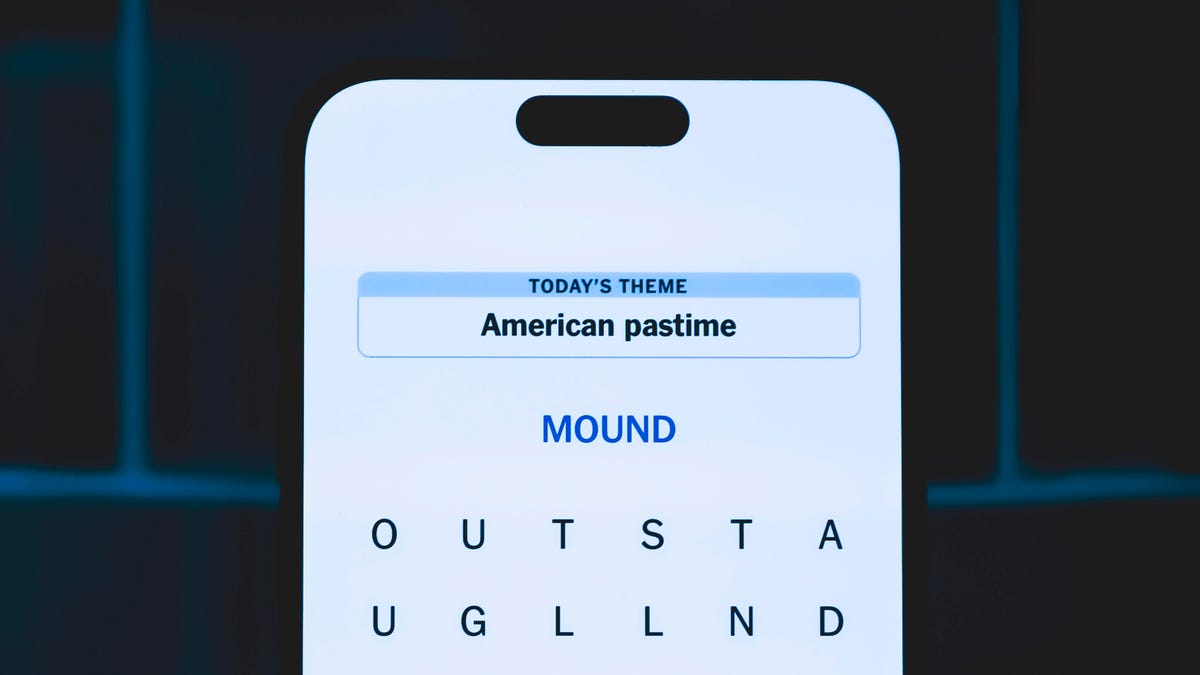
Looking for the most recent Strands answer? Click here for our daily Strands hints, as well as our daily answers and hints for The New York Times Mini Crossword, Wordle, Connections and Connections: Sports Edition puzzles.
Today’s NYT Strands puzzle is a fun topic — but one of the answers describes something I’ve never heard of before. Also, some of the answers are difficult to unscramble, so if you need hints and answers, read on.
I go into depth about the rules for Strands in this story.
If you’re looking for today’s Wordle, Connections and Mini Crossword answers, you can visit CNET’s NYT puzzle hints page.
Read more: NYT Connections Turns 1: These Are the 5 Toughest Puzzles So Far
Hint for today’s Strands puzzle
Today’s Strands theme is: For cubs fans.
If that doesn’t help you, here’s a clue: Like Gentle Ben.
Clue words to unlock in-game hints
Your goal is to find hidden words that fit the puzzle’s theme. If you’re stuck, find any words you can. Every time you find three words of four letters or more, Strands will reveal one of the theme words. These are the words I used to get those hints but any words of four or more letters that you find will work:
- LAIR, RAIL, CROP, LAID, BALD, DEAN, BROW, DIZZY
Answers for today’s Strands puzzle
These are the answers that tie into the theme. The goal of the puzzle is to find them all, including the spangram, a theme word that reaches from one side of the puzzle to the other. When you have all of them (I originally thought there were always eight but learned that the number can vary), every letter on the board will be used. Here are the nonspangram answers:
- BLACK, BROWN, GRIZZLY, PANDA, POLAR, SPECTACLED (That last one is the one I’ve never heard of! But it’s real!)
Today’s Strands spangram
Today’s Strands spangram is BEARSINMIND. To find it, start with the B that’s five rows to the right and three letters down, then wind up, over and down the whole far-right row.
Don’t miss any of our unbiased tech content and lab-based reviews. Add CNET as a preferred Google source.
Toughest Strands puzzles
Here are some of the Strands topics I’ve found to be the toughest.
#1: Dated slang. Maybe you didn’t even use this lingo when it was cool. Toughest word: PHAT.
#2: Thar she blows! I guess marine biologists might ace this one. Toughest word: BALEEN or RIGHT.
#3: Off the hook. Again, it helps to know a lot about sea creatures. Sorry, Charlie. Toughest word: BIGEYE or SKIPJACK.
Technologies
Today’s NYT Mini Crossword Answers for Friday, Jan. 9
Here are the answers for The New York Times Mini Crossword for Jan. 9.
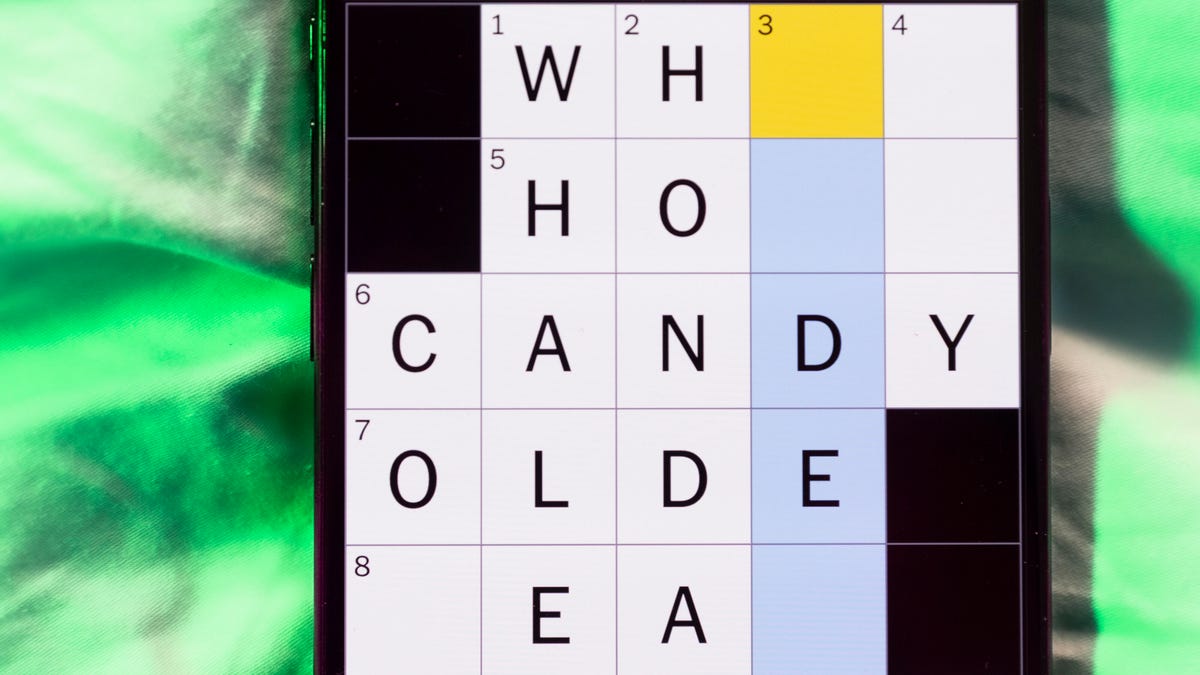
Looking for the most recent Mini Crossword answer? Click here for today’s Mini Crossword hints, as well as our daily answers and hints for The New York Times Wordle, Strands, Connections and Connections: Sports Edition puzzles.
Need some help with today’s Mini Crossword? The Across clues were kind of tough today. Read on for all the answers. And if you could use some hints and guidance for daily solving, check out our Mini Crossword tips.
If you’re looking for today’s Wordle, Connections, Connections: Sports Edition and Strands answers, you can visit CNET’s NYT puzzle hints page.
Read more: Tips and Tricks for Solving The New York Times Mini Crossword
Let’s get to those Mini Crossword clues and answers.
Mini across clues and answers
1A clue: Question in a late-night text
Answer: YOUUP
6A clue: Plentiful
Answer: AMPLE
7A clue: Saint ___ and Nevis (Caribbean nation)
Answer: KITTS
8A clue: Baby-bringing bird
Answer: STORK
9A clue: Take care of the tab
Answer: PAY
Mini down clues and answers
1D clue: Himalayan herbivores
Answer: YAKS
2D clue: Fail to include
Answer: OMIT
3D clue: «High five!»
Answer: UPTOP
4D clue: The «U» of UV rays
Answer: ULTRA
5D clue: Annoying to deal with
Answer: PESKY
Don’t miss any of our unbiased tech content and lab-based reviews. Add CNET as a preferred Google source.
Technologies
I Got Up Close and Personal With Boston Dynamics’ New Atlas Robot
Before Atlas takes its first steps into the world of work later this year, I found myself face-to-face with CES 2026’s most talked-about robot on the show floor.
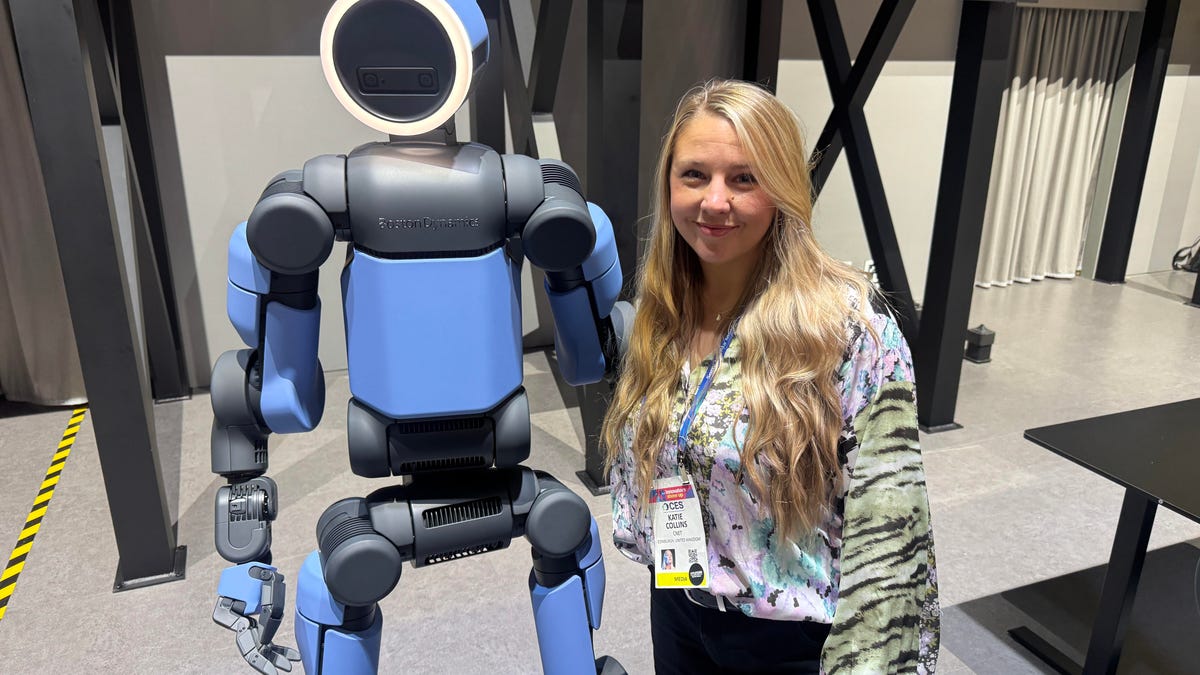
When I say that I went hands-on with the new Boston Dynamics Atlas robot, I mean that I actually held hands with it. This humanoid robot, which CNET just awarded the Best Robot of CES Award, is one of the most advanced in the world, and I couldn’t pass up the opportunity to get up close and personal with it.
This product version of the robot, which is set to be shipped to Hyundai factories imminently to start working, has been the talk of CES this year. The specific Atlas robot I encountered was a static model that wasn’t turned on or fully operational. Our interactions were, therefore, sadly one-sided. Still, I ran my hands over its soft-touch plastic shell and gently prodded at its finger joints, wondering how it would feel if they gripped me back.
People tend to have varying feelings about humanoid robots — understandable given that they are built to some degree in our image, while also usually being stronger than us, with «brains» that we don’t fully understand. Atlas definitely evokes contradictory emotions for me — even more so when I stood face-to-face with it.
I’m in awe of the engineering, a little fearful of its capabilities, hesitant about what it could mean for the future of humanity and charmed by its design and styling. The periwinkle blue iteration of Atlas that I met on the show floor at CES 2026 almost bears more resemblance to a Dyson product than it does the industrial robots that defined Boston Dynamics’ early days, when it was best known for its work with DARPA.
«There’s a lot of really specific things about this robot that probably look a little weird,» said Zachary Jackowski, Boston Dynamics VP and general manager of Atlas. He pointed to the legs, which he described as «like nothing anyone else was doing.»
Atlas’ thighs are narrow set and in line with the torso, while the calves are wider set, attached to their upper counterparts with a circular joint. This robot is, in fact, all subtle curves and soft lines. There are no harsh edges or stark angles.
During a year when CES has been flooded with humanoid robots, Atlas definitely does stand out due to its design. It appears both less classically human and less industrial than some of its peers, while also lacking the often intimidating, featureless faces they tend to exhibit. Instead, it has two low-set cameras resembling eyes placed where you’d usually expect a mouth to be. Its face is a perfect flat circle, defined by an LED halo that gives it a somewhat Pixar lamp effect.
I asked Jackowski why Boston Dynamics decided to skew so relatively unhuman with this version of its humanoid. «Well, it’s not a human,» he said. «It projects the wrong first impression about a robot to have it pretend to be something that it’s not.»
Particularly in the early days of humanoids, he added, robots won’t have anything like human-like intelligence. People should look at it and see it for what it is — a tool for performing tasks safely and efficiently.
In fact, most of the design decisions were made to keep Atlas as simple, scalable and safe as possible, Jackowski said. I remark that there’s some irony in thinking of a humanoid robot as simple, given the complexity of the technology and development process to bring Atlas to life.
The key to making it simple, Jackowski said, is having a strong enough grasp of the technology to «accomplish the complex thing of building a humanoid robot,» but then being able to take it apart and understand that you can use fewer computers and actuators in it while achieving the same results.
And it’s essential to Boston Dynamics that Atlas is perceived as simple. After all, it’s a general-purpose humanoid, which might eventually be sent far and wide to fulfil all manner of roles. Jackowski calls it the «ultimate generalist.»
Simplicity aside, there are aspects of Atlas that Jackowski believes set it apart from other humanoids at the show. «The repairability of this robot is crazy good,» he said. «The runtime is crazy good. The strength is unlike anything.»
From working in Hyundai’s manufacturing plants, Atlas’s job trajectory is to eventually graduate to many of the same industrial environments where Boston Dynamics’ Spot robot works, before moving to bussing tables in the service industry and eventually into the home. The robot will evolve between now and then, Jackowski said. However, this could be an early glimpse of the type of humanoid that will eventually be our housemate.
That’s some way away, though, which is probably for the best. As I gaze up at Atlas, which I’d guess is around the same height as my husband, my feeling is that, however impressive Atlas is, I’m still not ready for it to move in.
-

 Technologies3 года ago
Technologies3 года agoTech Companies Need to Be Held Accountable for Security, Experts Say
-

 Technologies3 года ago
Technologies3 года agoBest Handheld Game Console in 2023
-

 Technologies3 года ago
Technologies3 года agoTighten Up Your VR Game With the Best Head Straps for Quest 2
-

 Technologies4 года ago
Technologies4 года agoBlack Friday 2021: The best deals on TVs, headphones, kitchenware, and more
-

 Technologies4 года ago
Technologies4 года agoVerum, Wickr and Threema: next generation secured messengers
-

 Technologies4 года ago
Technologies4 года agoGoogle to require vaccinations as Silicon Valley rethinks return-to-office policies
-

 Technologies4 года ago
Technologies4 года agoOlivia Harlan Dekker for Verum Messenger
-

 Technologies4 года ago
Technologies4 года agoiPhone 13 event: How to watch Apple’s big announcement tomorrow
